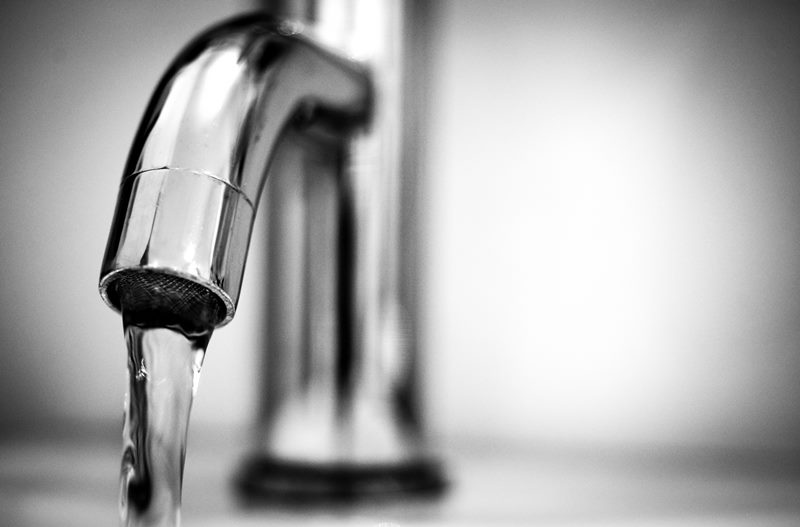In 2017, the worst-hit district municipalities, Amathole, Chris Hani and Joe Gqabi District Municipalities, received help from national and provincial authorities. The Nelson Mandela Bay Municipality has been looking at ways of finding new water, including desalination and tapping new underground water sources.
The completion of phase two of the Nooitgedacht low-level water scheme during 2017 helped ease the pressure on the metropole, with the biggest dams such as the Churchill and Kouga dams having reached critically low levels of 15%. A desalination plant at Swartkops and new boreholes around the Uitenhage Springs are among other projects that will help to alleviate shortages.
The municipality’s website is raising awareness about water scarcity. The slogans that come up on the scroll include, “Go Grey!” and “Public enemy: water leaks”.
One option being considered is for the Nelson Mandela Bay Municipality to join hands with SABMiller, which needs a lot of water to makes its products, and Marina Sea Salt, which desalinates sea water to make salt. The Coega Development Corporation (CDC) is also investigating desalination as it needs water for the gas-related industries at the Coega Industrial Development Zone.
The Nelson Mandela Bay metropole currently gets its water from 10 dams, six of which are owned by the municipality. The Churchill and Impofu dams supply half the total supply, with the latter dam having a full storage capacity of 105-million cubic metres. The municipality maintains about 3 000 km of reticulation water mains, about 650 km of bulk-water pipelines and six waste-water treatment works.
Water services are provided to the citizens of the Eastern Cape by 17 water service authorities which oversee 163 drinking water supply systems. Municipalities and Amatola Water are the primary providers of services.
Purification, desalination, water-leakage management and waste-water treatment are some of the problems facing the sector and solutions are urgently needed. There are opportunities for innovative entrepreneurs.
According to Water Wheel magazine, 37% of water delivered to the nation’s municipalities is lost.
A water supply and hydropower project is planned on the Umzimvubu River, under the control of the National Department of Water and Sanitation. The project entails the construction of two multipurpose dams, Ntabelanga and Laleni Dams, on the Tsitsa River, which is a tributary of the Umzimvubu, to supply irrigated agriculture, domestic and industrial water requirements, and hydropower generation in the catchment area. The smaller dam at Tsitsa Falls will supply the hydropower element.
The Umzimvubu catchment and river system stretches for over 200 km from its source in the Maloti‐Drakensberg watershed on the Lesotho escarpment to Port St Johns. The river and adjacent forests, grasslands, thickets and dune vegetation are amazingly diverse but are threatened in various ways. The Umzimvubu Catchment Partnership Programme wants to find ways protect the environment while helping with poverty alleviation through the provision of water, erosion control and fodder for livestock and food security.
In 2017/18 the DWS will spend R12.5-billion on dams, water transfer schemes and bulk distribution. Improving and expanding water infrastructure are key elements to ensuring water security in a water-scarce country.
The long-term drought that afflicted South Africa brought several responses from the Eastern Cape Department of Water and Sanitation (DWS) and have led to the development of the Eastern Cape Water Master Plan in an effort to alleviate the drought situation.
Another intervention by DWS, the Hyancinth project, has a budget of R6.09-million. The invasion of the aquatic weed needs to be controlled and, if unchecked, will disrupt water systems throughout the province. Importantly, clearing water hyacinth can provide significant volumes of biomass for the creation of alternative bioenergy.
Systems
Inter-basin water transfers are the norm in South Africa. In the 1950’s, the Orange River Project delivered water from the Orange River to citrus farmers in the far-away Eastern Cape. This project made the citrus industry possible in places like Addo.
The country’s river systems are mostly not where its people are, so 80% of the water used by the most populous and economically important province, Gauteng, is imported from neighbouring Lesotho.
The Nooitgedacht Low Level Scheme is an extension of this system of transfers. It treats water from the Gariep Dam which comes to the Port Elizabeth area via the Orange-Fish River Tunnel and various rivers that are connected to the Sundays River irrigation scheme.
Amatola Water manages bulk water infrastructure across 50 000 km², encompassing the district municipalities of Chris Hani and Amathole, together with portions of other municipal areas. Backlogs in rural areas and smaller municipalities are still prevalent, and this water authority is playing a key role in reducing and eradicating these inequalities.
The Eastern Cape Development Corporation is helping the Makana Municipality in terms of the Integrated Social Infrastructure Delivery Programme (ISIDP). With the city of Grahamstown housing many schools and a university (and the National Arts Festival), the Makana Water Crisis Intervention Project is strategically important .
Online resources
- Amatola Water: www.amatolawater.co.za
- National Department of Water and Sanitation: www.dwa.gov.za
- Umzimvubu Catchment Partnership Programme: www.umzimvubu.org
- Water Institute of South Africa: www.wisa.org.za
- Water Research Commission: www.wrc.org.za



